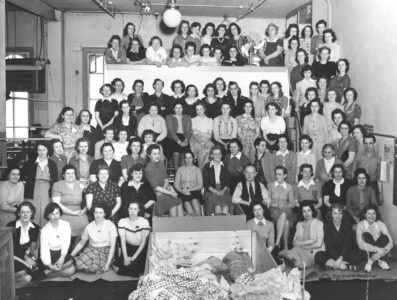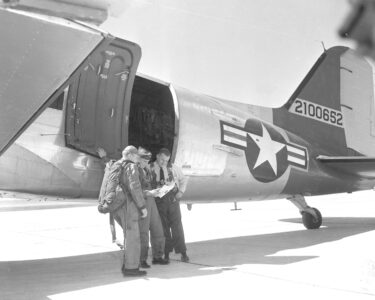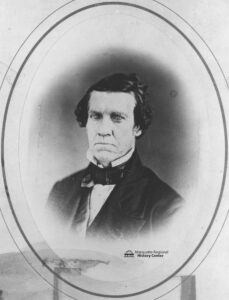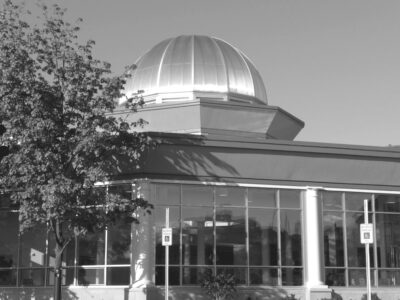Ad-dressing the country: U.P. Dress Manufacturing Co. a busy place in Marquette during, after World War II
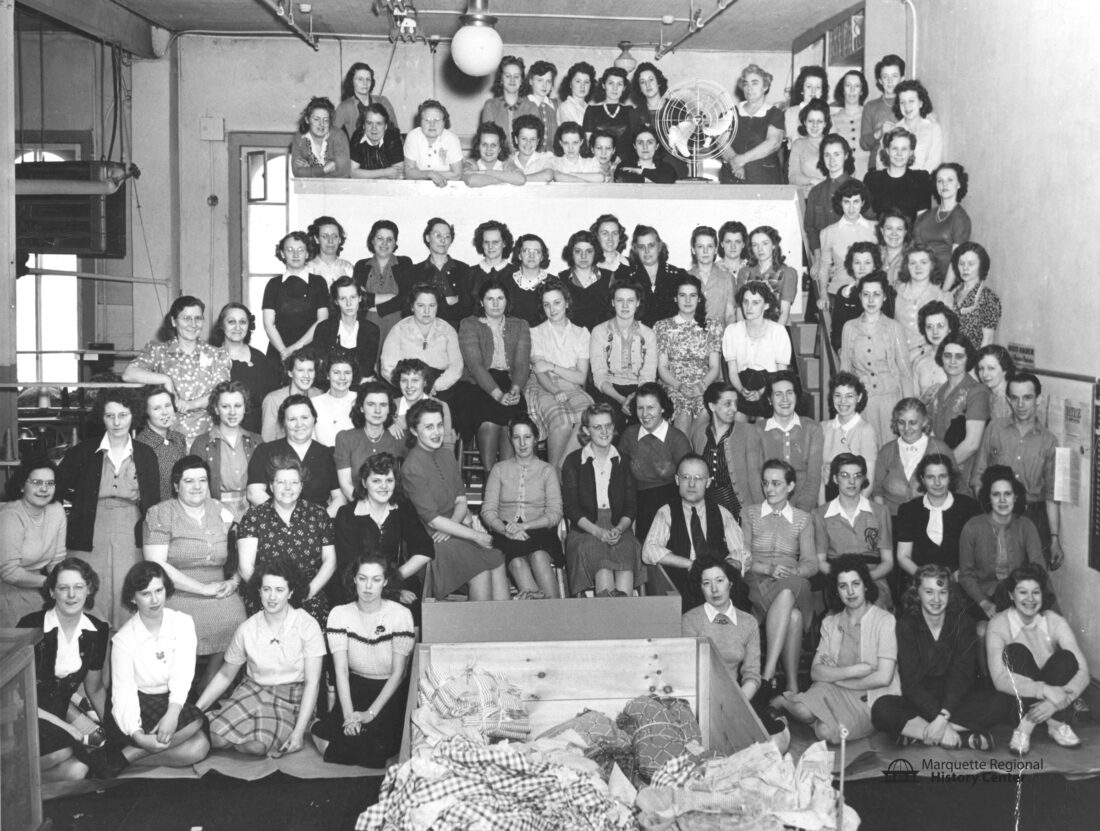
These are the numerous employees and managers of the Upper Peninsula Dress Manufacturing Company of Marquette during its heyday in the 1940s. (Photo courtesy Beth Gruber, Marquette Regional History Center)
(ITALICS)
Editor’s note: This article was adapted from the “Winter 1989 Harlow’s Wooden Man” article from the late Rachel Crary.
(REGULAR)
On March 17, 1941, the Upper Peninsula Dress Manufacturing Company’s plant opened for business in Marquette, following advocacy and support from the Marquette Chamber of Commerce.
The facility was under the management of David M. Abelew, who had previously operated the Negaunee Dress Factory for six months, and an inactive partner, William R. Davey of Negaunee. The plant occupied about 5,000 square feet of space on the second floor of 119 Baraga Ave., over the Cloverland Garage.
A contract was secured with the Lee Garment Company in Chicago, and the factory began turning out dresses retailing at about $2 each.
Material was cut in Chicago, then sent to Marquette, where the garments were stitched, before returning to Chicago for pressing and folding. When the factory opened, it had material for 6,000 dresses on hand and only three employees, but the garment factory quickly grew.
Within a few weeks, 50 sewing machines were installed, followed by a pressing machine, pressing irons, a steam boiler and pressing tables, allowing the garments to be completed in Marquette. By the first payday in early April 1941, the plant employed 45 young women, 35 from Marquette and 10 from Negaunee.
By August 1942, an additional 40 sewing machines were added, bringing the factory total to 130. However, due to wartime shortages, the company could not purchase new machines and had to borrow them from the Lee Garment Company.
By this time, the factory was producing approximately 1,000 cotton and rayon garments per day.
Even as it increased the number of machines, the company also struggled with wartime labor shortages. That August, the company began seeking “apprentice girl operators.” They had a six-month permit to hire 25 apprentices, probably from the Federal Committee on Apprenticeship. The girls had to be residents of Marquette, high school graduates, and between 18 and 22 years old. They would spend two months training before receiving a full-time job.
On its second anniversary, March 17, 1943, the company employed nearly 100 operators, each earning around $20 per week. The Marquette Chamber of Commerce happily publicized that the factory’s two-year payroll was an aggregate $100,000, representing money taken out of Chicago firms and deposited in Marquette banks.
David Abelew said that as each employee completed her second year of employment, she was paid 45 cents per hour, five cents over the minimum wage. Because of the continued shortage of trained help, the factory was in operation two evenings each week and on Saturday, in addition to regular workdays. This provided a considerable amount of overtime for employees, 95 percent of whom were residents of Marquette.
“When victory comes,” Mr. Abelew declared, “we expect the return of several dozen operators whom we trained here and who are now working in war plants elsewhere. Their jobs are waiting for them as we can always use several dozen more good operators. We have provided additional room for more workers at any time.”
By 1943, the factory was producing 6,000 dresses weekly for a firm in St. Louis. The company acquired ownership of the Baraga Avenue building and rented, in addition, the third floor of the Public Service Garage on South Front Street for use as a cutting department. A smaller branch plant was also operating in Negaunee.
The U.P. Dress Manufacturing Company was sold in 1946 to a Chicago firm, but Abelew and Davey continued to manage it until 1947. In November 1948, the Chicago organization sold its interest in the plant. Abelew and Davey went on to open the Queen City Apparel Manufacturing Company, organized for the production of women’s sportswear and dresses.
(ITALICS)
If you’re someone who enjoys designing and making your own fashion statements, join the Marquette Regional History Center’s Fashion Show and submit your own creations as part of the fourth biennial Lake Superior Fiber Festival. Flaunt your socks, mittens, hats, sweaters, scarves, shawls, purses and any other sewn, quilted, woven, felted, knitted, crocheted or embroidered garments and accessories. Pick up and submit item description forms to the MRHC by noon on Friday, Oct. 3. Win door prizes such as books, patterns, yarn and more.
The Lake Superior Fiber Festival will be held on Saturday, Oct. 4, at the history center. Learn more about the MRHC’s collection and enjoy colorful fiber arts displays, join us for several creative and educational demos, and take home free hands-on arts and crafts activities. The festival is an open-house event, from 9:30 a.m. to 4:30 p.m., with the fashion show at 12:30 p.m. This is a great event for all ages, including families, clubs and individuals. General admission fee will cover entry to the museum and to the fiber festival. Sponsor-level museum members and above receive free admission.

